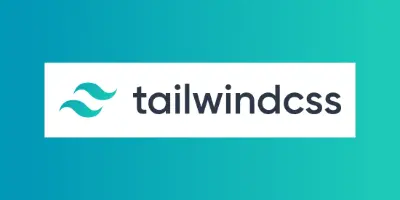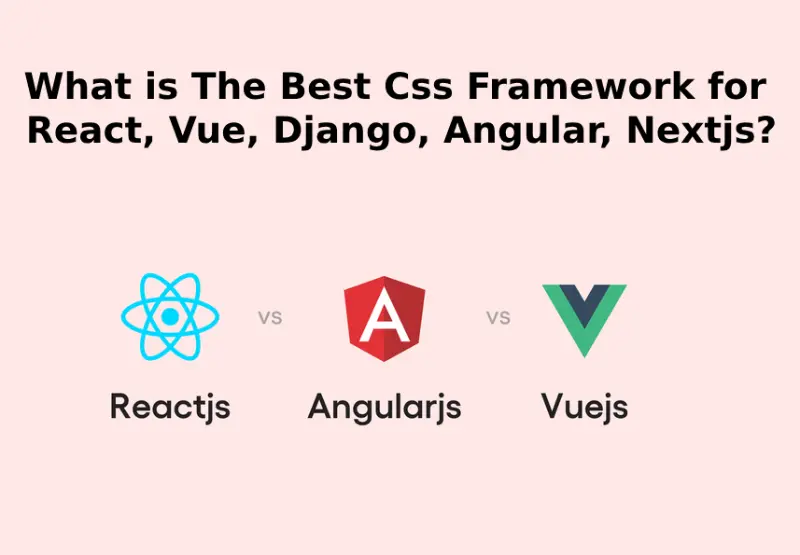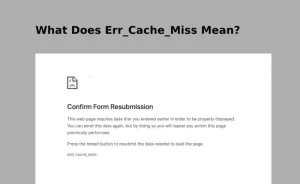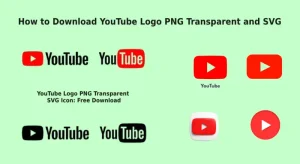During dynamic web development tasks you must find which CSS Framework matches your requirements best. Building responsive web applications with visually appealing results and performance efficiency is now possible through the indispensable features of Css Framework. Developers need to tackle the challenging decision of selecting an appropriate CSS framework among existing multiple options based on their tech stack requirements. The following guide demonstrates how specific CSS frameworks work best with key frontend and backend tools including React, Vue.js and Django, Angular plus Next.js. See More Blog
A Comprehensive Guide for What is The Best Css Framework
Fundamentally your selection of Css Framework is determined by your project specifications along with the level of familiarity you have with the specific framework you choose. Multiple CSS frameworks exist among which users frequently select these popular options.
Table of Contents
1) React Css Framework:
The component-based framework React has gained popularity due to its declarative architectural structure while working on modern web applications. Developers face several possibilities when choosing React project css framework because each framework provides distinct advantages. What is The Best Css Framework
(a) Tailwind CSS
The utility-first method of Tailwind CSS has increasingly appealed to React developers because it enables quick UX prototyping alongside flexible design capabilities. Tailwind CSS simplifies development by providing a wide range of pre-made utility classes which foster uniform code design throughout projects.
Pros:
The utility-first approach helps developers create software at high speed while maintaining effortless customization functions.
Users can customizeelements with a configuration file containing color and spacing settings and other properties.
The design element of responsiveness functions as part of Tailwind CSS alongside straightforward alterations for specific elements.
The system removes unutilized CSS elements to enhance speed performance.
Large community and extensive ecosystem with plugins and resources.
Cons:
Verbose HTML due to numerous utility classes in markup.
Users new to utility-first CSS find the learning curve quite steep.
Style properties are embedded in HTML markup that reduces semantic content.
Using too many utility classes during development creates disorganized code.
Not ideal for small projects due to initial setup overhead.
(b) Ant Design
Ant Design serves as a design system which functions as a UI library for enterprise-scale web application development. The system delivers a collection of high-end React components which support both user-friendly design language as well as effectiveness standards. Developed by Alibaba Group, Ant Design delivers diverse UI components including buttons and forms along with layouts for navigation components and tables and charts. What is The Best Css Framework
Pros:
Comprehensive components for building modern, complex UIs quickly.
Customizable with themes and configuration options.
The system implements a design system that follows Ant Design principles.
Rich documentation and active community for support. What is The Best Css Framework
Built-in internationalization for multi-language support.
Cons:
Large component bundle files produce significant size overload that negatively affects overall performance efficiency.
Advanced design structures need additional time to achieve customized appearance options.
Experienced developers will find lower flexibility because other UI frameworks are lighter.
Design presents limitations which make it inconvenient for creating distinctive visual styles.
(c) Material-UI
The Material-UI framework delivers React components with Google Material Design principles through a broad selection of ready-made styling elements. By providing extensive documentation and theme customization options Material-UI enables streamlined and well-organized application development through easily implemented UI element additions which ensure design consistency across the application. What is The Best Css Framework
Pros:
The system utilizes pre-made Google Material Design elements to achieve professional and uniform visual presentation.
Users can configure their front-end through selectable theme packages and design customization options.
Rich documentation and active community for support.
Members of the React community enthusiastically use it while its broad adoption makes the software both adaptable and scalable across many sectors.
The framework provides accessibility features combined with internal mechanisms that benefit users in their interactions.
Cons:
The framework makes performance suffer because of its big bundle size.
Steep learning curve for beginners, especially with advanced customization.
Design solutions become generic when organizations fail to extensively adjust them.
Integrating Vuetify with projects that do not use React often proves slightly challenging.
2) Vue.js Css Framework:
Expert developers around the world prefer Vue.js because this lightweight framework comes with both simplicity and its reactive behavior. Developers have access to varied options designed for their requirements when choosing the best css framework? for Vue.js projects. What is The Best Css Framework
(a) Vuetify
Pros:
Material Design components for consistent, professional UI design.
User-friendly customization of themes together with straightforward options to change visual styling elements.
The framework includes a grid system that can scale content automatically according to mobile-first design principles.
The toolkit includes different UI elements spanning forms alongside data tables as well as charts.
Active community and good documentation.
Cons:
The framework size takes up excessive memory space which leads to performance degradation.
Ecologic codepertization creates barriers for people who are new to Vue as well as to Vuetify’s particular coding rules.
A lack of flexibility exists when comparing Vuetify to utility-first frameworks particularly Tailwind.
Design appears structured and restricted until developers spend time with customization work.
(b) Buefy
The lightweight Buefy interface uses Bulma CSS as its foundation to present its minimalist collection of UI components. Buefy serves developers perfect tools for creating elegant and responsive interfaces thanks to its modular structure and Vue.js compatibility. What is The Best Css Framework
Pros:
Buefy offers a minimalistic front-end solution which rests upon the Bulma framework structure.
Buefy allows developers to create a Vue.js interface effortlessly.
Customizable with Bulma’s flexible classes. What is The Best Css Framework
The framework includes responsive features automatically which means components adapt seamlessly to mobile screens.
The framework provides small component bundles which enable quick page loading.
Cons:
The component selection of Buefy remains limited when comparing with Vuetify although it operates on the Vue.js framework.
Bulma stands as a requirement which some users might find undesirable for designing uniquely customized interfaces.
Fewer advanced features for complex UIs or enterprise-level projects.
Community support functions at a lower level than other recognized frameworks.

(c) Bootstrap Vue
Bootstrap Vue entities the user-friendly capabilities of Bootstrap “what is the best css framework?” together with Vue.js component elements to provide developers an accessible development approach. The combination of Bootstrap Vue’s strong grid system together with its large component library allows developers to speed up their frontend work without sacrificing cross-compatibility with present Bootstrap applications. What is The Best Css Framework
Pros:
Bootstrap-based components for a familiar and consistent design.
The grid system from Bootstrap delivers full responsiveness while ensuring mobile-first design approaches.
Users can keep development smooth because the framework works well with Vue.js integration.
Users gain control over their design through Bootstrap’s visual theme options and additional Vue element parameters.
Large community and extensive documentation. What is The Best Css Framework
Cons:
Bootstrap passes its extended weight to the framework through its large bundle size.
The design flexibility remains limited when developers use Bootstrap-based frameworks instead of utility-first frameworks.
The modification of Bootstrap defaults involves increases in customization complexity.
Dependency on Bootstrap limits user flexibility when building distinctive UI interfaces.
3) Django Css Framework:
The Python web framework Django stands out because of its simple design alongside scalable functionality and robust security measures. Several CSS framework integration options are available for developers working on Django projects since each alternative aligns perfectly with specific design choices and development methods. What is The Best Css Framework
(a) Django Material
The Django Material platform serves as a theme library for Django deployments with design foundation coming from Google’s Material Design approach. Through its collection of pre-designed templates and its versatile components Django Material enhances Django project development by delivering polished Material design user interfaces.
Pros:
Material Design components for a modern, consistent UI.
The framework achieves smooth integration into Django projects which streamlines project implementation tasks.
Users can customize theme options together with component elements for individualized interface design.
problémy like navigation and forms and buttons come pre-packaged.
Well-documented with active community support. What is The Best Css Framework
Cons:
The component library of the framework stands smaller than what Material-UI provides as a larger framework.
Not as flexible for highly customized or unique designs.
Projects limited to Django fall outside the framework’s capability range due to Django dependency.
New developers face challenges when learning both Django frameworks and Material Design principles.
(b) Bulma
The modern what is the best css framework? Bulma implements Flexbox principles for creating minimalist yet flexible web application styling. The implementation of Bulma in Django projects lets developers build nice user interfaces through the combination of its responsive grid and modular components. What is The Best Css Framework
Pros:
Lightweight and minimalistic, with a simple, clean design.
Responsive grid system for mobile-first design.
Users benefit from its simple syntax and mocking out dependence on JavaScript scripts for functionality.
Developers can customize Bulma through basic class overrides together with simple variables.
Active community and good documentation. What is The Best Css Framework
Cons:
Builder lacks built-in JavaScript capabilities so developers need to integrate separate libraries to achieve interactive features.
The framework provides fewer advanced elements than full-featured Bootstrap framework solutions.
The framework needs extensive customization before it appears flexible.
Tip templates require extra libraries for building complex interfaces and complete applications.
(c) Bootstrap Django
Bootstap Django creates integrated Bootstrap what is the best css framework? functionality for Django applications to help developers utilize all Bootstrap design elements and styling elements. With its Django-specific templates and utilities, Bootstrap Django streamlines the process of building responsive and feature-rich web applications. What is The Best Css Framework
Pros:
Visual elements can easily be integrated into Django through a method that accelerates mobile-friendly design development.
The toolkit includes pre-made navigation bars, forms with buttons which allows developers to work more quickly on their projects.
Embedded theme customization tools exist through Bootstrap’s native variable system.
The framework enjoys strong community adoption because it supports extensive documentation as well as widespread adoption.
No JavaScript dependencies for basic components.
Cons:
The framework produces files that become slow to load on websites.
Generic styles result from excessive lack of customization in design processes.
Limited interactivity without additional JavaScript or Vue/React. What is The Best Css Framework
Unique design requirements can increase project complexity owing to extensive override work.
4) Angular Css Framework:
The Google-maintained JavaScript framework Angular is recognized for its robust capabilities alongside scalability features as well as application development capabilities for large platforms. Angular developers benefit from multiple specialized CSS frameworks which adapt specifically to Angular’s component-oriented structure for their projects. What is The Best Css Framework
(a) Angular Material
Angular Material provides Angular developers official pre-designed components that follow the Material design guidelines set by Google. Through its native integration into Angular development Angular Material enables developers to create well-polished consistent user interfaces which lead to improved user experiences.
Pros:
Material Design principles form the basis for Angular Material’s wide range of pre-designed UI component offerings.
Angular provides complete integration to enable effortless development alongside uniform user experiences.
The platform provides mobile-first capabilities alongside responsive parameters and native design attributes.
The platform accepts theme customization to fit project branding.
Active community and well-maintained documentation. What is The Best Css Framework
Cons:
Its large bundle dimension can produce performance problems.
Steep learning curve for developers new to Angular or Material Design.
The framework provides lower flexiblity for design solutions compared to framework options that allow more customization.
Complex setup for advanced features or customizations.
(b) PrimeNG
The Angular UI development framework PrimeNG delivers multiple components with customizable visual elements and aesthetic themes for developers. PrimeNG renders smooth development because its thorough documentation guides professionals to design dynamic front-ends through its ongoing community backing system which accommodates diverse use scenarios and interface design styles. What is The Best Css Framework
Pros:
The application development framework provides wide-ranging controls for building complex user interfaces that support data tables alongside charts and forms.
Customizable themes and easy integration with Angular.
Responsive design comes built-in for producing mobile-friendly user interfaces.
Well-documented with a large active community. What is The Best Css Framework
Advanced functionality includes accessibility features together with localization support.
Cons:
Excessive bundle size presents a challenge to performance delivery.
Users sometimes experience system overload because of the multitude of design options and features.
The framework provides lower flexibility when designing intricate custom systems when compared to utility-first approaches.
Accessibility functions within Angular applications restrict its usability in frameworks outside of Angular.
(c) NGX Bootstrap
Through its integration of Bootstrap’s CSS framework with Angular components NGX Bootstrap achieves smooth implementation of UI elements throughout Angular applications. The comprehensive documentation along with Angular reactive architecture compatibility found in NGX Bootstrap results in faster development cycles and Angular project compatibility. What is The Best Css Framework
Pros:
The integration of Bootstrap components with Angular delivers straightforward use to developers.
No jQuery dependency, fully native to Angular.
Users can modify components by employing Angular’s advanced binding and templating features.
This version is closer to Angular by providing an optimized Bootstrap experience with minimum weight.
Users can take advantage of Bootstrap’s grid system for responsive design capabilities as a framework feature.
Cons:
Bootstrap’s design system creates limitations which affect designers’ ability to develop custom designs.
Not as feature-rich as other Angular component libraries like Angular Material or PrimeNG. What is The Best Css Framework
A lot of additional work becomes necessary to achieve effective complex customization as well as integration with other systems.
Fewer users inform developers about this framework when comparing it to established libraries like Angular Material.
5) Next.js Css Framework:
Next.js stands as a top React framework which delivers a strong base for developing both server-side rendered and statically generated web applications that optimize performance and dynamism. Next.js projects provide developers with multiple frameworks designed specifically to work seamlessly within the adaptable Next.js framework. What is The Best Css Framework

(a) Tailwind CSS
Tailwind CSS operates through its utility-first design which makes it an ideal framework for Next.js application styling tasks. Tailwind CSS utility classes enable developers to quickly build and customize Next.js component styles which results in user interfaces that maintain both performance and visual cohesion. What is The Best Css Framework
Pros:
Utility-first approach for rapid development and customization.
The toolkit provides detailed customization capability that users can control through a single configuration file for style elements.
Responsive design functionality is integrated into the system through simple class modifiers.
Application purge functionality efficiently removes surplus CSS code from the application system.
Fast development and consistent design system. What is The Best Css Framework
Cons:
Verbose HTML with many utility classes in markup.
Relatively high barrier exists for developers adopting utility-first CSS structure at first.
Code readability may suffer when semantic HTML is not applied into the CSS framework.
When poorly managed the framework can create disorganized code.
(b) Styled JSX
Next.js developers can achieve element-specific styling using Styled JSX as their component-specific version of CSS-in-JS. This CSS-in-JS variant lets developers embed their custom styles directly into JavaScript. Through its natural connection to Next.js’s build framework Styled JSX improves both code modularity and segmentation which makes styling Next.js development more streamlined. What is The Best Css Framework
Pros:
Scoped CSS: Additional formatted CSS can benefit component-specific elements thanks to their component-based restriction scope.
Familiar syntax: Developers familiar with React find the combination of JavaScript and CSS-in-JS styling especially accessible.
Dynamic styling: The tool enables developers to write dynamic styles through JavaScript expressions. What is The Best Css Framework
No need for external CSS files: Each style lives inside the component itself for improved design encapsulation.
Cons:
Limited support: The primary purpose of this tool targets React applications yet provides limited utility for other project types.
Can be verbose: The combination of inline styles and JS expression tends to produce messy code.
Potential performance issues: Many dynamic styles in production can affect the time needed for rendering.
Less flexibility: The CSS-in-JS version developed by Chakra UI provides fewer capabilities compared to identical solutions such as styled-components.
(c) Chakra UI
Next.js projects easily integrate with Chakra UI through its accessible modular UI component library design that supports React applications. Through its customizable and composable components Chakra UI provides developers tools to create responsive accessible interfaces that help focus efforts on functionality and user experience. What is The Best Css Framework
Pros:
Simple and flexible: This system maintains effortless operation while emphasizing basic integrity together with universal accessibility.
Fully customizable: Allows theming and style overrides.
Responsive design: Built-in utilities for mobile-first layouts.
Component library: Users benefit from a diversified collection of ready-to-use reusable UI elements.
Accessible by default: All components throughout the system prioritize accessibility in their design process.
Cons:
The bank of UI components in Bootstrap results in sizeable bundle files. What is The Best Css Framework
Can be opinionated: Standard default style elements need adaptation when pursuing distinct design requirements.
Performance overhead: Certain styles within dynamic systems create minor performance impairments.
Developers new to the library together with its standard practices will face additional learning challenges.
Conclusion:
When developing web applications today web developers need to choose What is The Best Css Framework that an appropriate CSS framework for creating scalable applications as well as achieving maintainable designs and attractive visual outcomes. Project success demands selecting a CSS framework What is The Best Css Framework thats suits your development workflow along with your project needs and design priorities regardless of your work with React Vue.js Django Angular or Next.js. Developers who explore the many creative choices within each technical stack make better decisions which helps them utilize CSS frameworks to construct phenomenal web interfaces.




